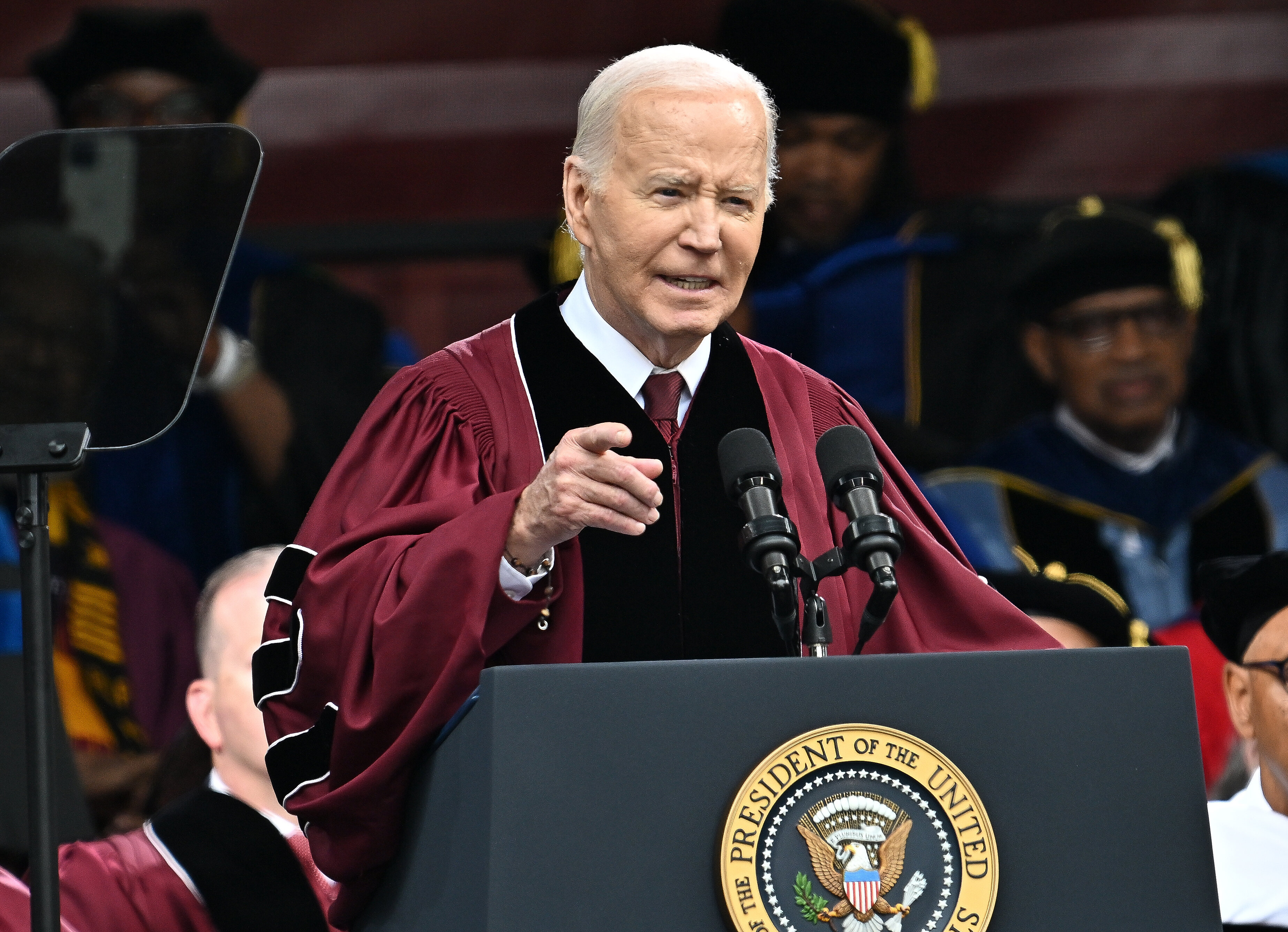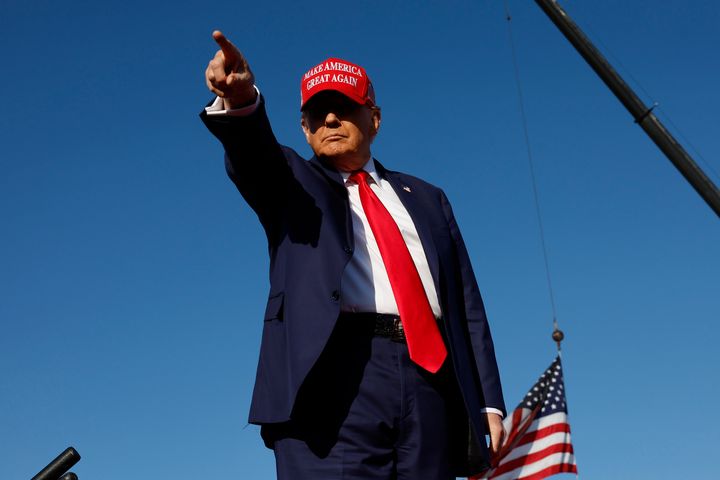
The New York Times’ release on May 13 of its latest presidential poll prompted another round of Democratic hand-wringing about President Joe Biden’s reelection prospects.
The polls, conducted with Siena College and the Philadelphia Inquirer, found that among registered voters, Biden trailed former President Donald Trump in five battleground states — Georgia, Arizona, Nevada, Michigan, and Pennsylvania — and led him in just one, Wisconsin.
More alarming still, Trump had a double-digit edge over Biden in two of those states, and is polling worse than Democratic Senate incumbents in four of those states — suggesting it’s the nominee himself, not his party, that’s the issue.
The truth is that while the current polling paints an incomplete picture, there are both genuine grounds for Democrats to be nervous about Biden’s trajectory, and bright spots to give them hope.
Much of the skepticism about Biden among core Democratic constituencies – Black, Latino, and young voters — is not reflexively partisan, as down-ballot polling suggests, meaning these voters could be amenable to persuasion. And the Biden campaign’s massive fundraising edge has given it confidence that it can get its message out to those voters more effectively than Trump can in the coming months.
“With these crosstabs, it can get tricky, but in general, Democrats should be worried,” said Avery James, a research analyst at the Republican polling firm Echelon Insights. “This is the best polling performance streak for a Republican presidential nominee we’ve seen since 2004, when Republicans won the popular vote.”
While other state-level polls have shown Biden trailing Trump by smaller margins, the polling average still has Biden behind in all six battleground states. But the Biden campaign has maintained that polling six months before an election is not very predictive, and is confident that its superior campaign infrastructure has equipped it to close the gap.
“The reality is that many voters are not paying close attention to the election and have not started making up their minds — a dynamic also reflected in today’s poll,” Geoff Garin, a Democratic pollster, said in a May 13 statement circulated by the campaign. “These voters will decide this election and only the Biden campaign is doing the work to win them over.”
Other Biden campaign allies have sought to cast doubt on the accuracy of the Times’ polling.
The most eye-popping aspect of the Times polling is also the most potentially redeeming for Democrats: Biden’s overall challenges stem mostly from his current weakness with core Democratic constituencies. Since those voters have a history of voting for Democrats, they could be easier to win back than, say, non-college-educated white voters, who have become a core part of the GOP base.
Nationwide, the Times found that Trump and Biden are essentially tied among Latino voters and voters under age 30, two blocs that Biden won in 2020 with 60% or more. And in a hypothetical head-to-head matchup with Biden that excluded third-party candidates, Trump is getting a historic 23% of the Black vote, according to the survey. If those numbers held through Election Day, he would turn in one of, if not the actual best, ever performances of any Republican among nonwhite voters.
In an interview on The New Republic’s “Daily Blast” podcast, Jeffrey Pollock, a senior pollster for Biden’s reelection campaign, expressed skepticism that Trump would actually hit those marks, but confirmed that younger and nonwhite blocs are where Biden needs to do the most work.
Indeed, Biden is running more competitively in the “Blue Wall” states of Pennsylvania, Michigan and Wisconsin than in Nevada, Georgia and Arizona — precisely because the former cluster has a smaller percentage of Latino and Black voters, Pollock noted.
But Pollock sees many of those voters’ “undecided” status, or their defection to third-party candidates like Robert F. Kennedy Jr., as evidence that they can be persuaded to return to the Democratic fold.
Nationwide, Kennedy is currently getting 10% of registered voters in the six states polled by the Times — but he’s getting 18% of voters under 30, 11% of Black voters, and 14% of Latino voters. Likewise, 15% of voters under 30 are undecided, as are 14% of Black voters and 17% of Latino voters, compared to 10% among all registered voters polled by the Times.
“We continue to see that many of the Biden administration's initiatives around pricing, things like junk fees and Medicare price negotiation are enormously popular, and meet what voters want to hear.”
- Evan Roth Smith, pollster, Blueprint
Closer to the election, when “we’re talking to voters and they know fully well that RFK has no shot of winning, and they know fully well that their vote or non-vote may very well lead to Donald Trump being the president of United States, that’s the kind of thing that I think changes and gets people off of their proverbial asses,” Pollock told podcast host Greg Sargent.
Young, Black, and Latino voters who are currently not planning to vote for Biden were more likely than other groups to say that they would change their minds. Although just 4% of all registered voters who are not planning to vote for Biden say there is “some chance” they will eventually support him, 9% of voters under 30, 9% of Black voters, and 8% of Latino voters said there was “some chance,” according to the Times’ national survey.
In addition, while the gap between Biden and Democratic Senate incumbents appears ominous at first glance, that gap also suggests opposition to Biden is soft and could be vulnerable to a targeted persuasion campaign.
Partisan identity is the leading determinant of for whom a person will vote. Voters otherwise inclined to vote for Democrats could be easier for Biden to pick up than those who vote Republican down-ballot.
Experts participating in a Thursday press briefing on young voters convened by Blueprint, a message-testing outfit funded by Democratic megadonor Reid Hoffman, argued that Biden is likely to close his current gap with Democratic senators up for reelection in Nevada, Arizona, Pennsylvania, and Wisconsin.
Lakshya Jain, a co-founder of the electoral data analysis site Split Ticket, attributed at least part of the gap to some Democratic-leaning voters’ desire to express frustration with Biden as their party’s nominee — a frustration they may be more likely to vent about to pollsters than act upon in the polling booth.
“That high of a degree of ticket-splitting is a good flag that voters are pissed off and are expressing discontent,” Jain said. “We call that expressive responding.”

The Biden campaign also says it’s scaling up the kind of field organizing infrastructure and advertising waves that will enable it to inform critical blocs of voters about Biden’s accomplishments and the threats posed by a second Trump term.
By the end of May, the Biden campaign plans to have 500 staff members working at 200 field offices in battleground states, compared to Trump’s bare-bones footprint in those states, which has prompted concern from local Republicans. That 200-office total includes outreach centers targeting voters from specific ethnic and racial communities. In Las Vegas, for example, the Biden campaign has an office dedicated to outreach in the Black, Latino, and Asian American communities, respectively.
Biden also has a growing fundraising advantage. The Biden campaign and the Democratic National Committee jointly had more than $58 million more in cash on hand as of the end of April than the Trump campaign and the Republican National Committee.
That edge has already enabled Biden to outspend Trump on TV. From early March to late April, Biden and his allies spent more than $27 million on TV advertising, compared with over $9 million by Trump and his allies.
In-person and in paid communications, Biden and Vice President Kamala Harris have made clear that they see shoring up Democratic base voters, especially Black, Latino, and young voters, as a top priority. On Sunday, Biden addressed the 2024 graduating class of Morehouse College, a historically Black men’s institution in Atlanta. Harris visited Atlanta in late April and Detroit earlier this month to kick off an economic opportunity tour.
Whether Biden succeeds in reaching these voters, however, could depend on what messages he chooses to emphasize. Evan Roth Smith, the pollster running the Blueprint initiative, has found that voters under age 30 have some of the same concerns about the economy, inflation, and border security that many voters share. In a late April nationwide poll conducted by Blueprint, a majority of young voters trusted Trump over Biden on just two issues: reducing prices (52%) and securing the border (53%).
“We continue to see that many of the Biden administration’s initiatives around pricing, things like junk fees and Medicare price negotiation are enormously popular, and meet what voters want to hear,” Roth Smith said. “They just don’t hear enough about it, and they don’t think it’s what he’s running on. Sometimes they don’t even know he’s done it.”
By contrast, Roth Smith counseled against focusing on Trump’s character or the threat he poses to the country’s democracy.
“It might be true, but it doesn’t move voters the way that things like ‘Donald Trump is a rich guy who’s going to cut taxes for other rich guys and giant corporations, and leave the middle and working class behind’ works,” he added.
Disclaimer: The copyright of this article belongs to the original author. Reposting this article is solely for the purpose of information dissemination and does not constitute any investment advice. If there is any infringement, please contact us immediately. We will make corrections or deletions as necessary. Thank you.
